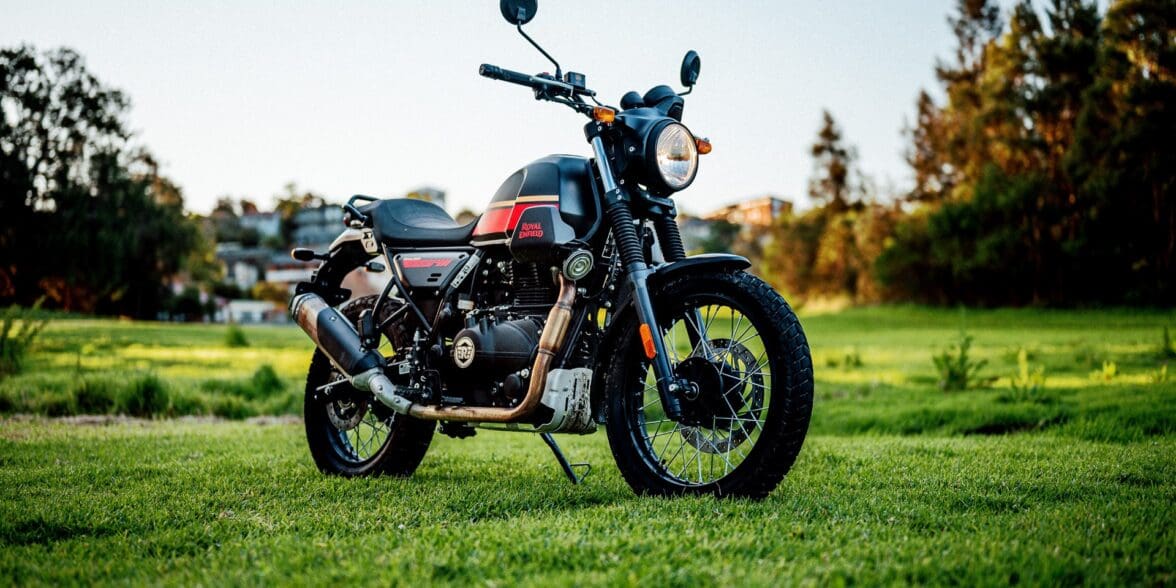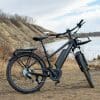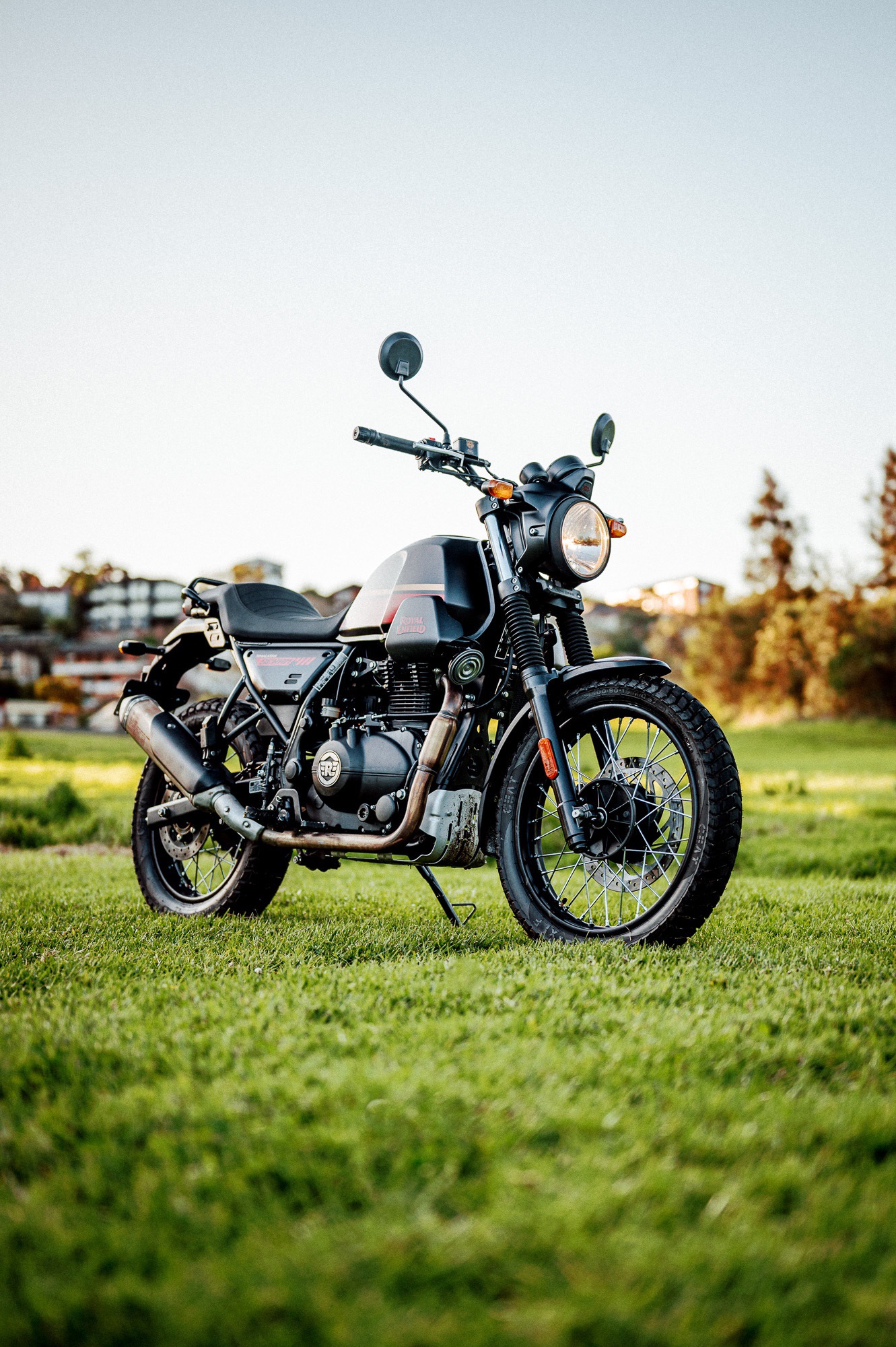Review Summary
- The 2022 Royal Enfield Scram 411 is a keenly-priced and very capable bike that’s light and heaps of fun to ride. There’s lots of great colour options, too.
- It comes with the “Tripper Pod”, which basically means you have Google Maps giving you turn-by-turn directions right there on your dashboard.
- Unlike some “scramblers” on the market, it’s based on a tried and tested off-road platform that was designed to handle pretty much any road you can throw at it.
In case you haven’t noticed, Royal Enfield has been going through some big changes lately. From their previous status as a quaint, historical bike maker that hadn’t really done anything new in decades, 2016 marked the release of their first Himalayan Adventure Tourer after three or so years of development, including an original design by Pierre Terblanche of Ducati Sport 1000 and Hypermotard fame.
This bike was Enfield’s line in the sand. And while they had been keeping busy with bikes like the Lightning and the Thunderbird in the early part of the new century, this was their first all-new, ground up, non-heritage, non-bullet model since forever. Clearly the tip of the iceberg, it signalled the rebirth of the classic brand and foreshadowed the 2019 release of their super successful 650 Twins. So needless to say, it’s an important bike.
Now nearing the tail end of its life, the big wigs at Enfield’s Indian HQ saw fit to give the platform one last blast by producing a scrambler version of it, no doubt in part thanks to the latest trends and the actions of other manufacturers such as Ducati, Triumph and BMW. So without too many clean-sheet-of-paper changes, they recently presented us with this: the 2022 Royal Enfield Scram 411.
But what exactly are the differences between the Scram and the Himalayan, and which if any should you splash your cash and swing your mud-covered leg over? Well, I’m glad you asked.
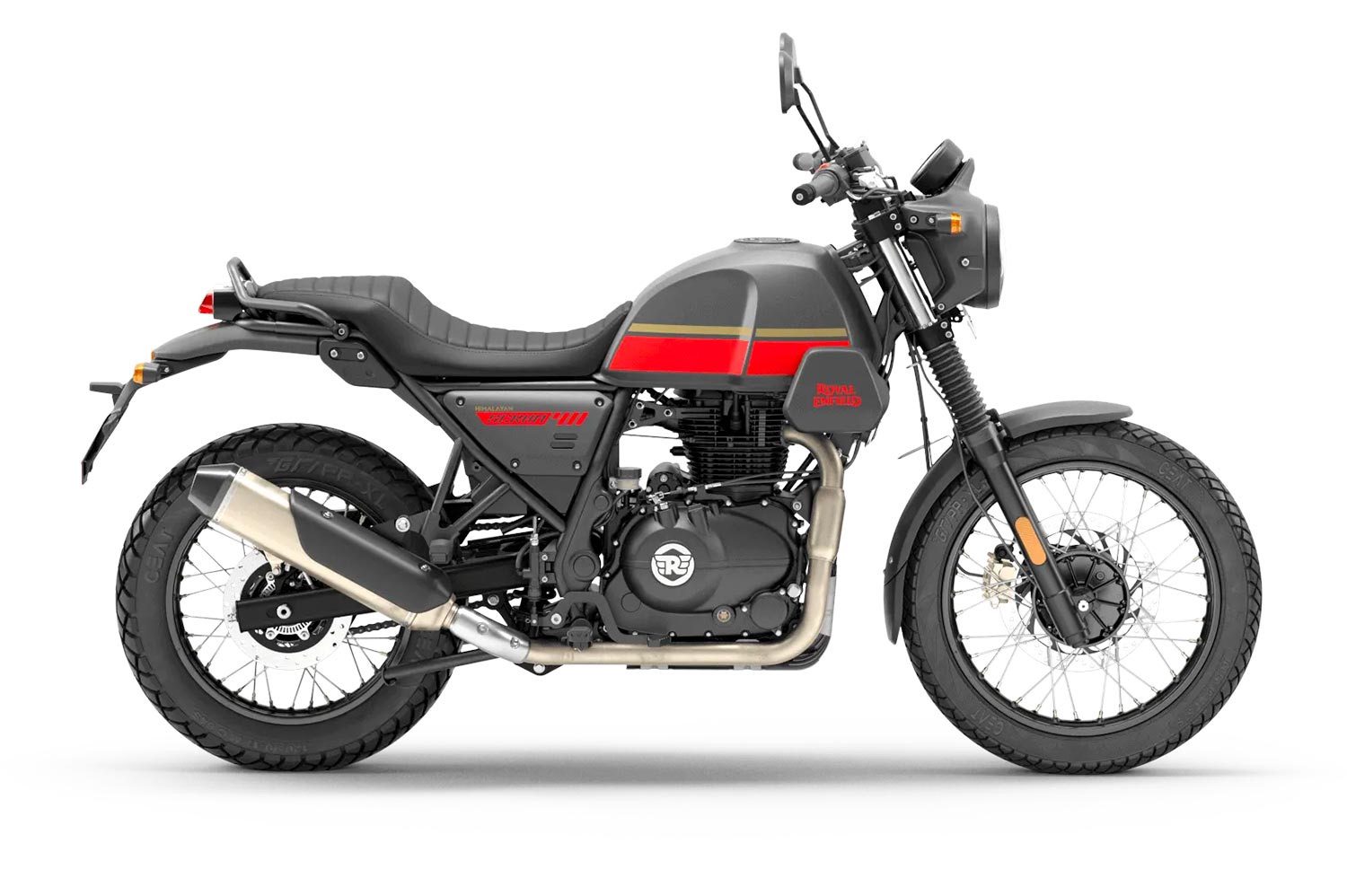
After an unceremonious start to the relationship whereby my mate managed to drop the Scram thanks to Sydney’s ongoing imitation of Atlantis and the resulting soft, muddy bogs that now pass for most grassy areas in the city, I grabbed the keys and commenced getting to know the bike, now sans the last third of its front brake lever. Oops. Nothing beats having to return a loaner bike to the dealership with your tail between your legs and a grimace on your face. Sorry guys.
But let’s not jump ahead. Because there’s a solid two weeks between the drop and the return where I put the new bike through its paces and tested its mettle. Let’s see how things turned out, shall we?
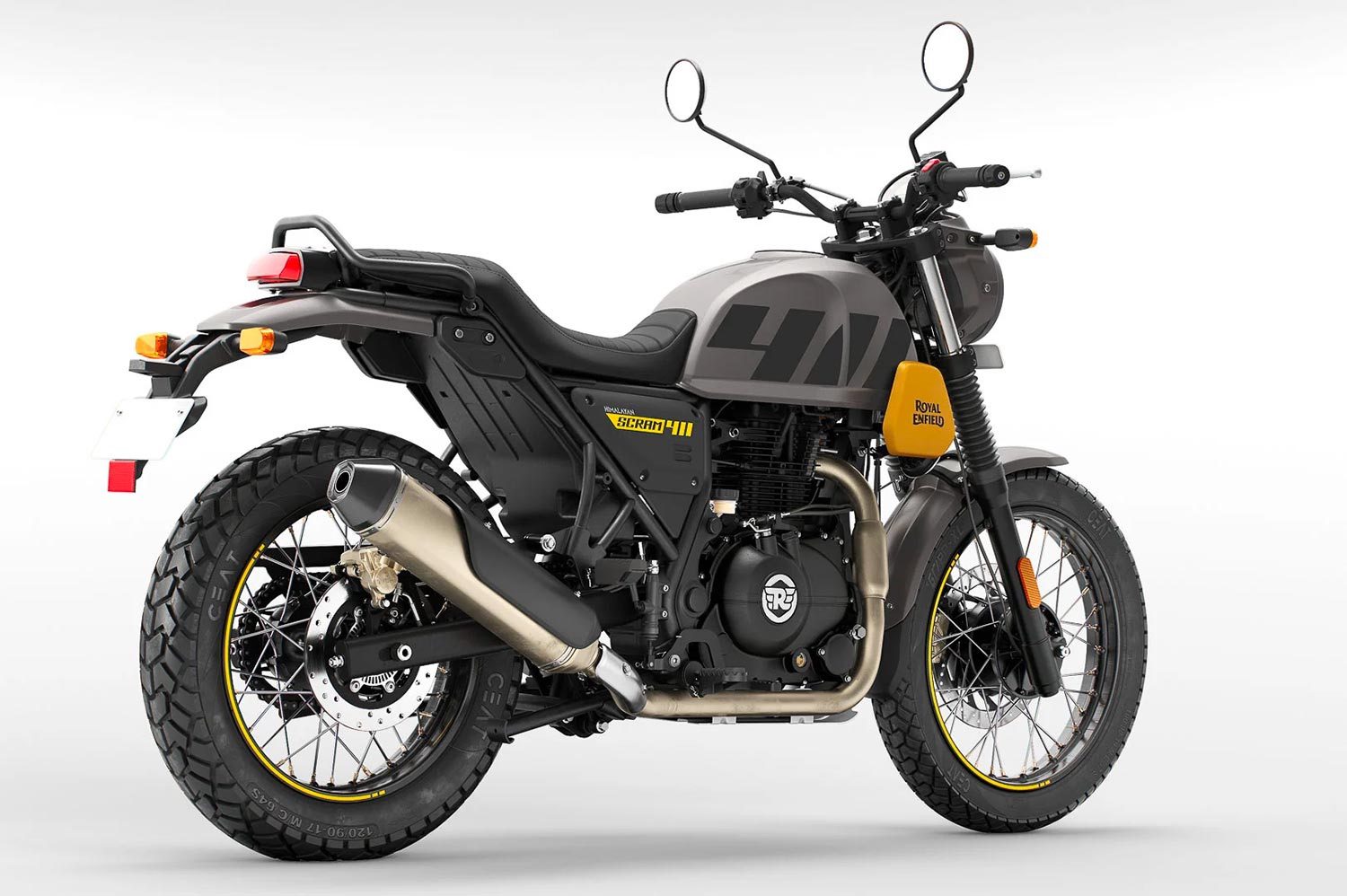
Key Features On the 2022 Royal Enfield 411 Scram
So what is the 411 0n the 411 Scram, exactly? Well, no prizes for guessing that it’s a 411cc single, just like the Himalayan that came before it. That bike is pitched to potential owners as an adventure–slash–touring motorcycle, it was conceived by the company when Royal Enfield boss, Siddhartha “Sid” Lal, got stuck in the Himalayas thanks to a flash flood while riding an earlier generation of bike that was decidedly not designed to traverse angry rivers.
The upshot is this thing was designed to take on the world’s biggest set of mountains. But that’s nothing new for Royal Enfield as the local tour guides have been using their bikes to ride up and down the slopes there for many, many decades. It’s really just about this platform being a little more “fit for purpose” than the old Bullets and Classics that preceded it. To that end, the Scram incorporates all the tweaks that Enfield has made over the years, including the long list of updates it performed to the Himalayan in 2021 to make it even better than before.
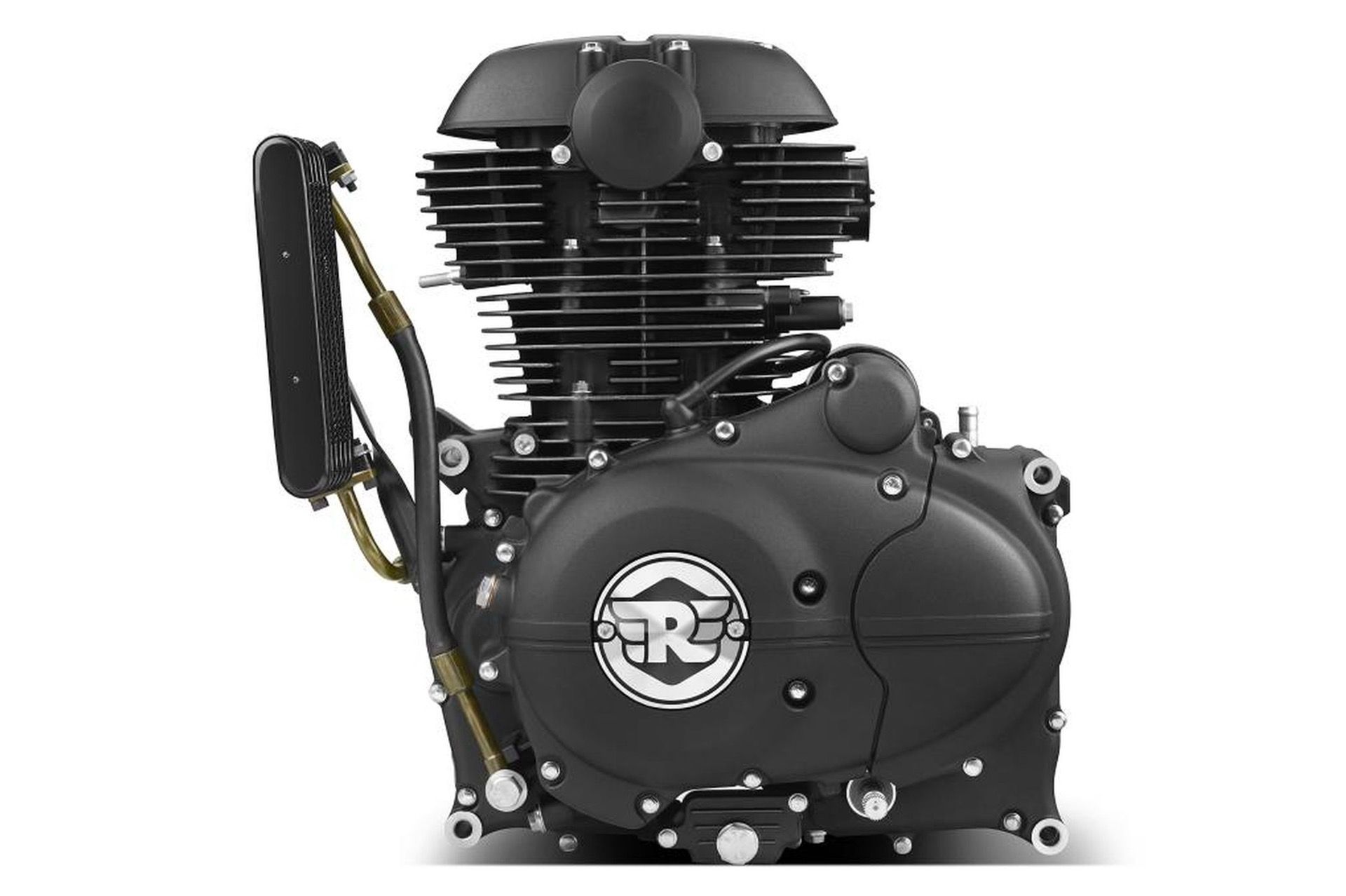
Engine
The thumping “LS410” single (an Enfield tradition) is more refined that the brand’s oldschool 350cc or 500cc singles, but it pays to remember that it’s still a decade old and was designed for reliability and simplicity more than it was for power and high revs. With a single OHC, fuel injection and a five-speed ’box, it’ll manage freeway speeds just fine but it’s clearly more suited to tooling around at lower speeds, kind of like you’d do around the city or—ironically enough—during off-road riding.

Electronics
Following suit from the engine’s lead, a technological powerhouse the Scram 411 is not. But what it is in the electronic area is competent and well-tested. The digital electronic ignition and switchable ABS brakes aren’t likely to rewrite any rulebooks, but they have been refined through a few iterations of this platform and they do what they need to well and without any showboating or unnecessary gimmicks.
Differences from the Himalayan
Major differences are no surprise: the Himalayan’s screen has been ditched, the front wheel is now a 19” as opposed to the Himi’s 21”, and the donor bike’s tank protector bars have been modded to hold the bike’s cool little “urban brand plate” that now sits in front of and slightly below the unchanged tank shape.
Other more subtle mods include a new seat, simplified dash and a whole bunch of trendy new colourways. It’s also slightly cheaper and lighter than the donor Himalayan. Oh, and the ABS isn’t switchable as with the Himi, so if that matters to you, you’ll have to pull the fuse to stop it locking up your wheels in the dirt.
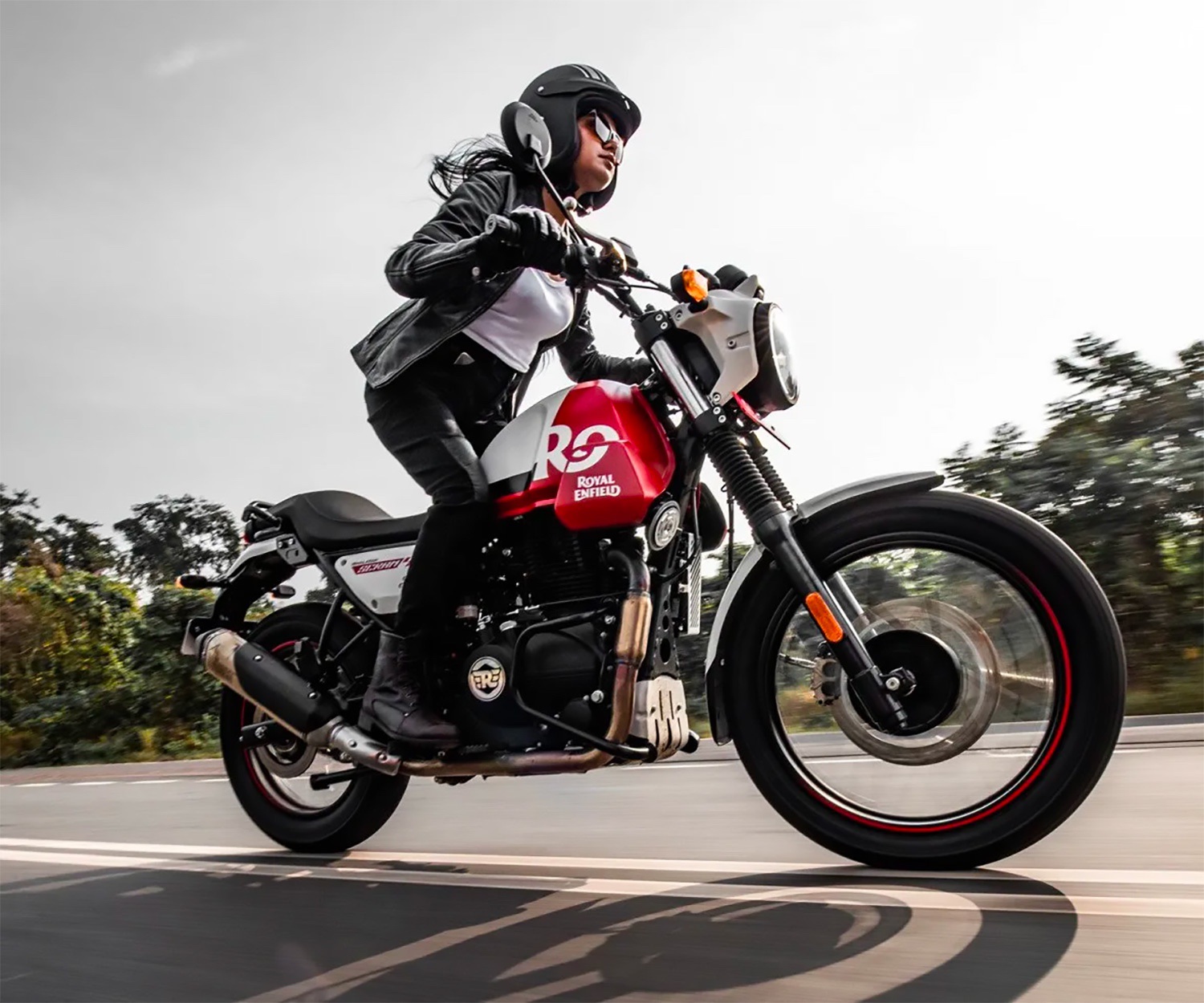
Specs
The humble single-cylinder donk runs a mild 9.5:1 compression ratio to channel its lumpy thump through a wet clutch and a 5-speed gearbox to a chain-driven rear wheel. Power figures are 24.3 bhp (17.88kw) at 6500 RPM. The 15 L (4 gal) tank brings the overall wet weight to a very manageable 185 kg (406 lb) bike with a seat height of 795 mm (31 in). The tyres are the Indian-made CEAT Gripp-XLHs: there’s a 100/90 19″ up front and 120/90 17″ at the back.
First Impressions of the 2022 Royal Enfield 411 Scram
“It’s tall,” was my honest first impression. And by that, I don’t mean the seat height. Parked next to my regular ride in the garage the bike really seemed to tower over it.
But that’s what you’d expect from a bike designed to be high enough to clear a few rocks and rivers, yeah? And I guess my other thought was just how similar it looks to the Himalayan. Yes, I know that the Terblanche design is probably considered sacred by the moto design police blah, blah, blah, but is it actually different enough to be its own thing, or is it just a watered-down Himi?
Time Travel
The next thing I noticed was the appearance of not one but two clocks on the bike’s dash. There’s one on the main dash and another on the new “Tripper” sat nav pod. And sadly, they both were reading different times. With no obvious indications of how to adjust either of them, I let them be while thinking to myself how annoying it would be to have to keep them both adjusted and in sync, which of course you wouldn’t.
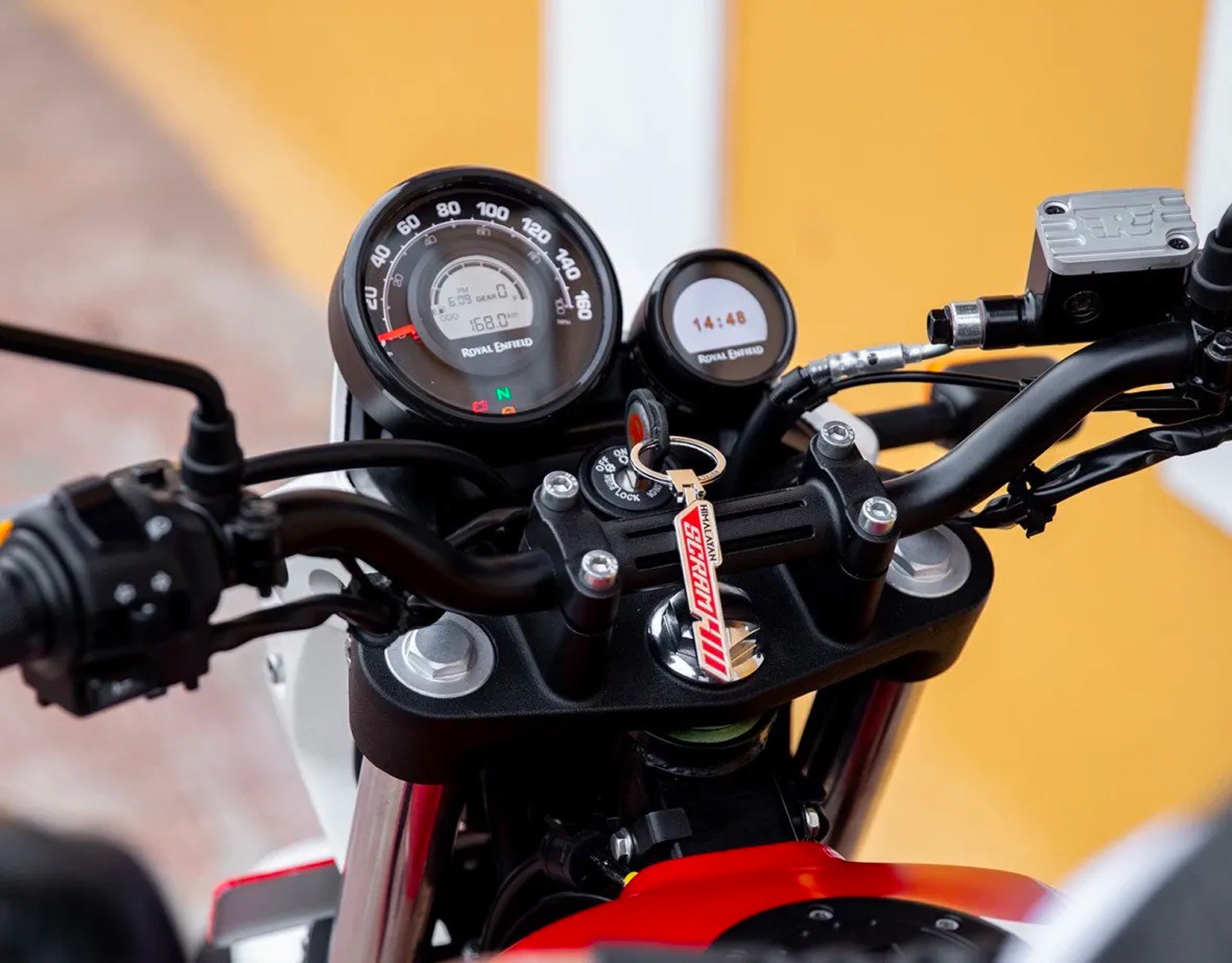
Jumping on the bike, there’s no doubt that the seat height is substantial, but for my fairly average inseam (stop laughing up the back) it was completely manageable. Add this to the fact that the bike isn’t exactly a heavy one, and I’d suggest that all bar those of an unusual small stature will feel at home holding the bike up when it’s stationary.
Tripper Pod
The next thing on my list was to hook my phone up to Enfield’s new “Tripper Pod”. The process was seamless and before I knew it, I had the thing flashing turn-by-turn directions at me in no time. So that’s a nice big useability tick in my books.
For the peeps at Royal Enfield who cut their teeth making motorcycles for the last century, tricky things like software, bluetooth and digital device useability would surely be well out of their wheelhouse. But I was a happy camper (or should that be “tripper”?) that it had been so easy to connect.
Fit and finish on the bike was exactly as expected; not any more and not any less. The company’s factory in Chennai has been upping their game over the past few years in a concerted effort to be able to play with the big boys when it comes to a bike with world-class levels of fit and finish; the Scram is prima facie evidence that they are well on their way.
Of course, you wouldn’t expect a bike in this price bracket to have BMW GS levels of polish. Indeed, I made an extra effort throughout my entire review process to keep in mind that this bike can be had for around USD $5,000. Talk about competitively priced.
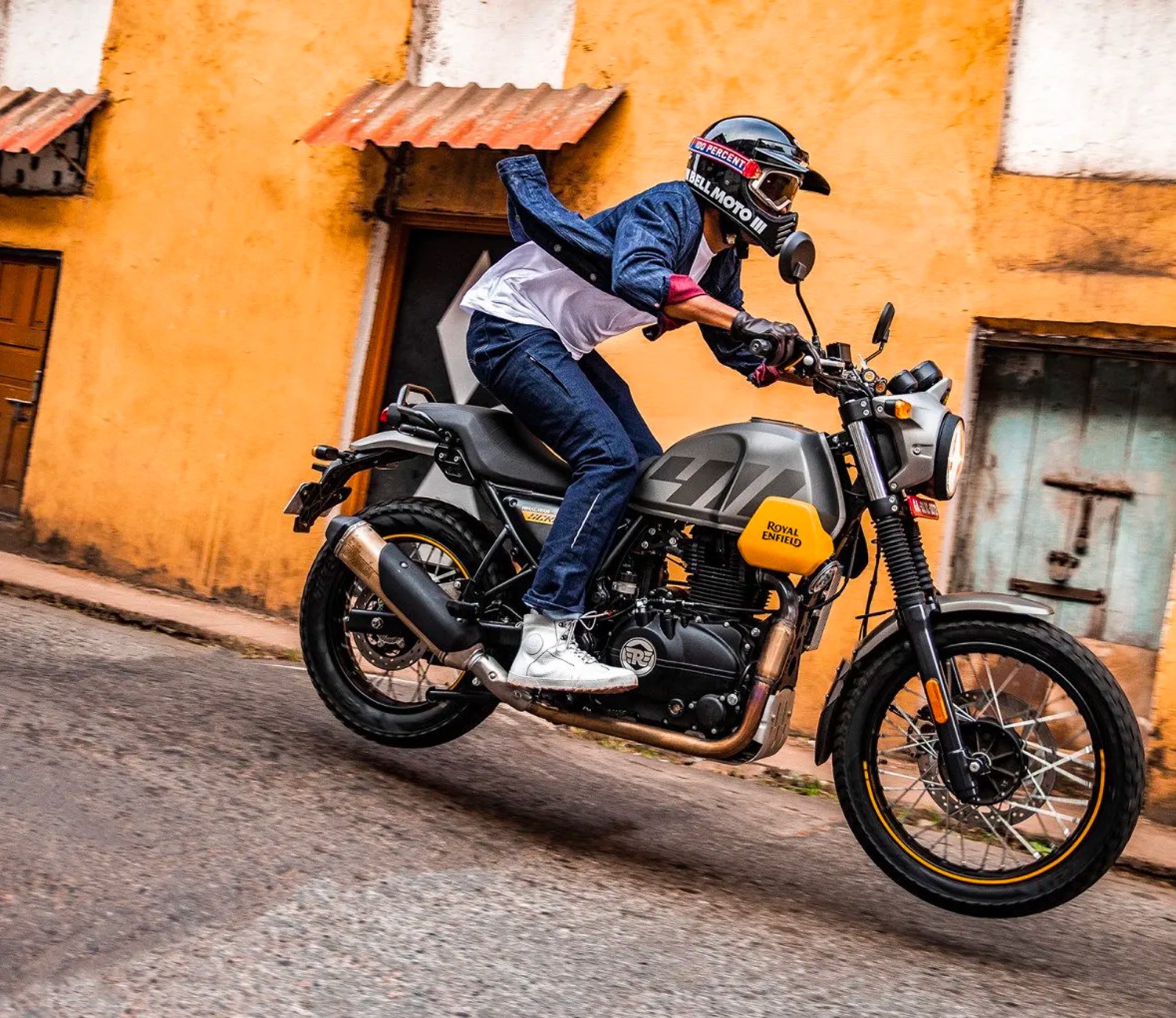
The only other note I made before I took the bike out on the road was regarding the Scram’s mirrors. While they function perfectly and were most definitely up-to-scratch in terms of vibrations, they did have a certain amount of “circus mirror” warping to them in the fact that whatever reflective material Enfield used to make them wasn’t being held completely flat once mounted inside the rear vision housing.
The end result was a certain amount of distortion and waviness to the image they were reflecting. Was it distracting? No. But it was noticeable.
Riding the 2022 Royal Enfield Scram 411
Riding in the City
Sunday came, so I donned my leathers and wheeled the bike out of the garage. As expected, it was a doddle to manoeuvre around both inside the confined spaces of the garage and out on the driveway. In other words, I think you’d have to get yourself in a hell of a pickle to drop the thing. Now for a proper test of the Tripper Pod. Noticing that it hadn’t connected automatically, I whipped out my phone and began to make the two units play nice together. After a frustrating 15 minutes or so, I gave up.
Now I’m no Elon Musk, but I do like to think that I know my way around a bluetooth phone or two. But try as I may, it just would not connect. It was then that I remembered my phone (an Apple iPhone 13) had displayed some message previously about the Royal Enfield app I was required to install using my location data when the app was not in use.

As with most people these days, I’m fairly conscious about this kind of personal data sharing, so I happily stopped the app from accessing the info. Little did I know that this would be a frustratingly permanent decision. With only a limited amount of time available to ride the bike before my dad-of-three-kids reality would kick back in, I gave up on the Tripper Pod and rode the bike out onto the street. More on this later.
The Scram handled the mild Sunday morning traffic with a comfortable and understated aplomb that anyone who’s ever ridden a bike from the maker will be familiar with. Taking a classic bike experience and generously coating it in a more convenient, more user-friendly package is what Enfield do best; it’s like you are somehow riding the entire history of motorcycling in one fell swoop. Ease of use and accessibility is exactly what Enfield is all about.
But with these more classic vibes comes a little bit of noise and vibration, too. Not in a bad way, mind you. But the engine is definitely not going to be mistaken for an electric bike any time soon. And with a decidedly humble 24-odd horses on hand, you’ll need to run it up and down the rev range quite frequently to keep it thumping along. The end result is some mechanical music that emanates from the engine and valvetrain that does somewhat telegraph to you just how hard the unit is working.
Interestingly, I subsequently rode the bike with my headphones on and I was more than a little surprised to learn that once I blocked the engine’s noise out, my whole perception of the bike changed from one that was a little noisy and basic to something much more capable and refined. Long story short, the LC 410 and it’s lack of a water cooling jacket to muffle the mechanical whirrs emanating from it means you will definitely hear it at work, just like the bikes of yore.

Out of Town
A good mate of mine who has owned a Himalayan previously had a decent bash on the bike and his thoughts on the Scram’s highway and open road performance was pretty cut and dried. The Scram was a buttload better than the carb-fuelled Himi. According to him, the first gen Himalayan was not entirely comfortable at freeway speeds. As with the old 350 and 500 models, anything over 100 km/h (60 mph) was clearly pushing the bike out of its comfort zone. But not with the new Scram.
From my own point of view, the bike was more than happy at higher speeds. Throttle response was great and it’s just so easy in the curves what with its light weight and narrow tyres. But the caveat here is that overtaking needs to be planned out in advance.
That luxury you have with big, powerful bikes to just pull out into oncoming traffic and let the excessive power and brutal acceleration take care of the smaller details is not an option with the Scram. The overtaking process becomes more like that of a car; time, space and distance must all be taken into account because—surprise, surprise—24 horses just ain’t enough to get you where you want to go in any great hurry.
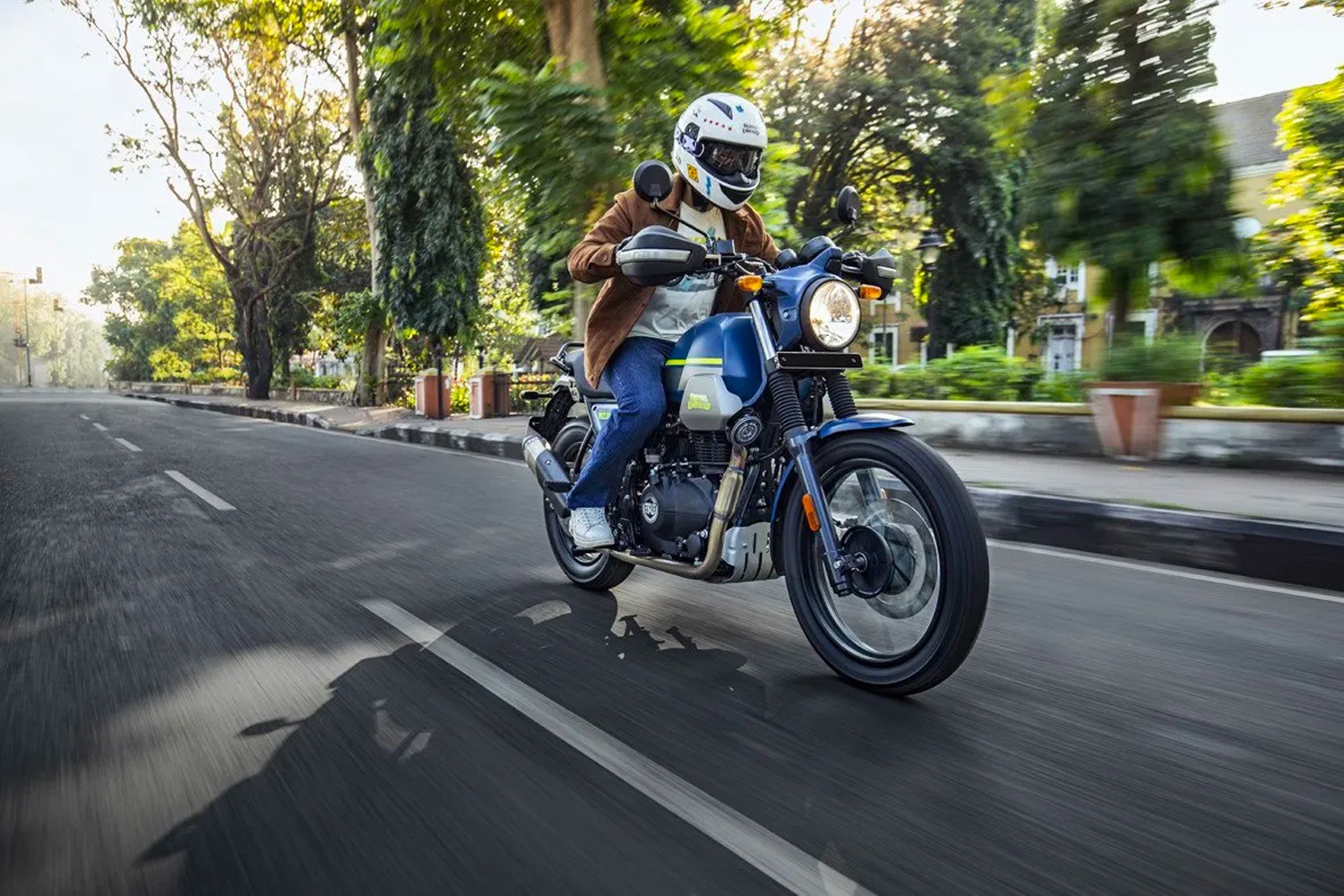
But there is also something very chill and unhurried about the Scram. And while a lot of the images you see here may show the bike doing “bitchin’ dude” extreme skids and jumps, I’d suggest that’s more to do with a Marketing Department brief than anything that reflects real-world use. Like that feeling you get when you leave the big city and travel the country where the pace of life is slower and more relaxed, the Scram requires you to alter the way you ride to something much more laid back and less aggressive.
My set course from Sydney’s inner West, down to The Royal National Park and back is probably not the ideal route to really test out the Scram; while it doesn’t include any long distances on freeways, it also has no off-road sections, nor does it have any country lane wanderings. I mention this because it’s where I feel the Scram really belongs.
Of course, it does really well in the city, and like many of it’s “scrambler” contemporaries—like the Triumph Street Scrambler and the Ducati Scrambler—you’d be wrong if you took the label at face value and assumed that it’s main purpose in life was to ride cross country tackling muddy paths, river beds and grassy hills. Like most “sport utility vehicles” these days, there’s no doubt that while the bike can handle getting a little dirty, it’s main role in life is intended to be on-road.
Arriving at the cafe south of the National Park which marks the turn-around point on my test circuit, I caught up with a moto mate and shot the poop about the bike. He was suitably impressed and said he’d be more than happy to own one. Overhearing our conversation, a stranger joined in the chat.
“Take that new Yamaha 770 Ténéré over there,” he said, gesturing to a bike parked nearby. “Sure, it’s a great bike, but when you consider the prices of both bikes, it’s not really TWICE the bike that the Scram is, yeah?” His point is spot on. You could have two Scrams for the price of the Ténéré. That doesn’t quite stack up, does it?
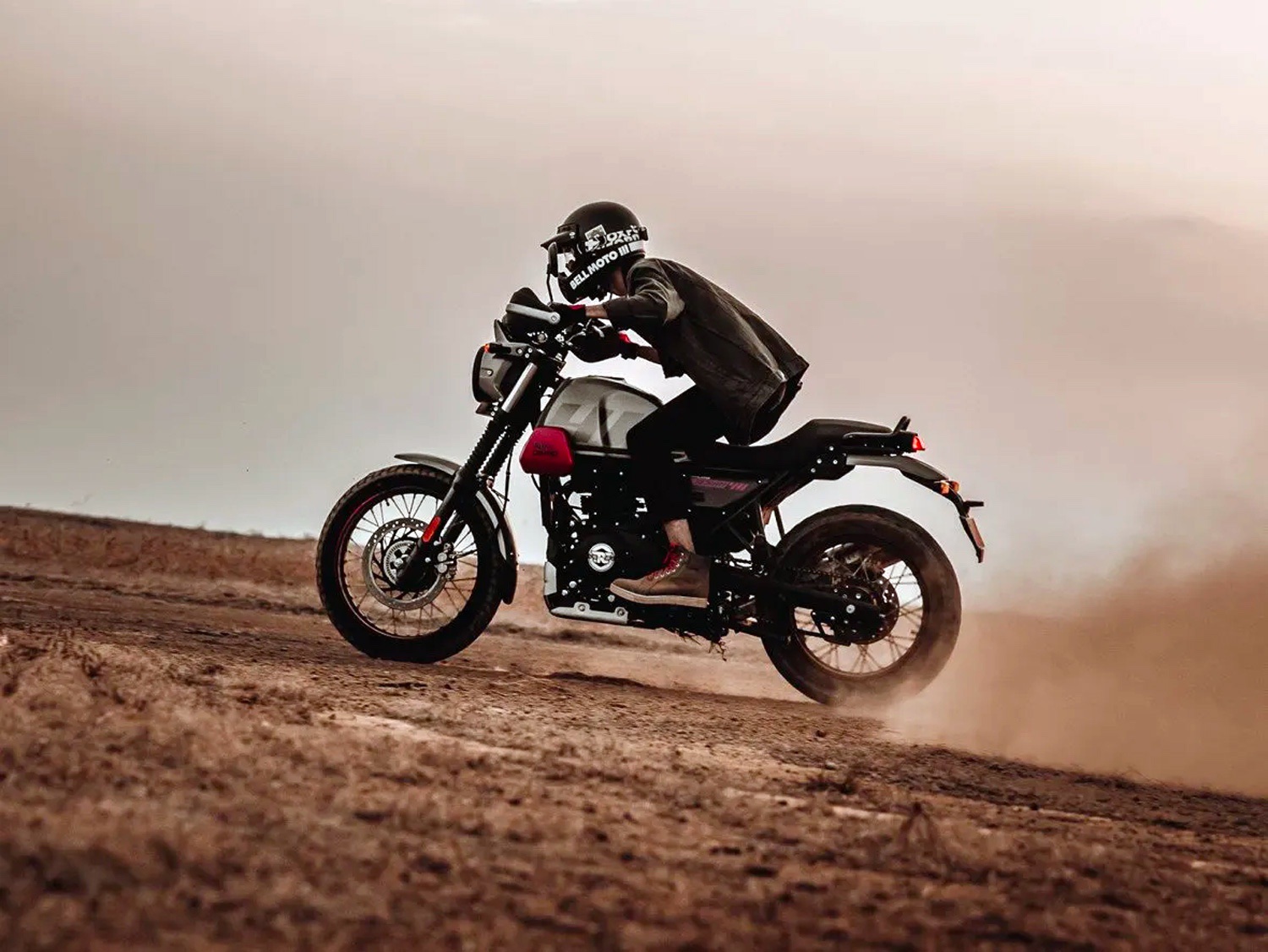
Riding Through the Curves
The heart of “The Nasho” (aka The Royal National Park) run south of Sydney is a stretch of subtropical rainforest that follows a small creek. The speed limit is 60 km/h (about 40 mph) but I tend to ride it at 15 or so above. Ahem.
The Scram seems to be in its element here: the speeds are comfortable and the corners (bar a handful) are gentle and reasonable. If you push hard, there’s no doubt you could flummox the suspension and really stress the engine, but doing so in the first place would probably say more about yourself than the Sram. It’s just not that kind of bike.
As a side note, I did not take the bike off road at any point. I have no doubt that if I did, my findings would be rather similar to how the bike performs on road. No, it wouldn’t be likely to win any Paris to Dakar races; not unless you took it back in time to 1979. But it’s not the platform’s first rodeo, either.
Enfields of all descriptions, including Himalayans and more than likely now a few Scrams, will be ridden up and down the mountain range bearing the same name as the Scram’s big brother on a regular basis. They always have been. And if that’s not ample proof that the engineering is dependable and capable off road, I’m not sure what is.
What Could Be Better on the 2022 Royal Enfield Scram 411?
Drivetrain Noise
There’s no two ways about it. The engine in the Scram is a mechanically loud one. And it’d be easy for me to go on here to claim that this meant Enfield’s LS 410 was in some way inferior to other engines due to it, but I honestly think that the reality here is simply that the engine is over a decade old and that’s pretty much that. Sure, it would be a different kettle of moto fish if the bike was brand new, but it’s not.
It’s also a very humble and unstressed lump that has been proven to be reliable and hardworking time and time again. For what you’d shell out to buy the bike in 2022, levelling criticism at the engine for not being the pinnacle of engineering refinement seems a little petty.



Looks
Most people will understand that the Scram 411 is more of a styling exercise than a distinctly new bike. There’s no deception here. It fills a scrambler-sized gap in Enfield’s lineup and it also follows a path trodden many times before by other manufacturers. Scramblers are hot property right now—or at least, the scrambler “look” is—so why not bust out a Himalayan Scrambler?
Yes, I think we’d all liked to have seen a high pipe and a new tank on the Scram 411. But in the end, Enfield wins because they get additional sales and longevity out of a platform that is nearing the end of its life cycle and the owners get a cheaper, lighter and more stylish version of a proven and recently-refined offroad platform. It’s a win/win situation for everyone.
And for those who yearn for a ground-up scrambler from the brand, I think that it’s a no-brainer for them to release a new model in this vein. I’m pretty confident that they will reveal one sooner rather than later, and that notion is backed up by a few internet spy photos that aren’t hard to find if you go Googling for them.
Dash & Mirrors
No, there’s nothing majorly wrong here to write home about. But the two clocks thing and the slighted warped mirrors kind of left me thinking that the bike was showing its age in the fact that it wasn’t worth it for the Enfield team to update the main display and delete the legacy clock that the Tripper Pod makes redundant. It left me with a kind of “this could’ve used some extra attention to detail” feeling. But that would have upped the retail price, too, which wouldn’t really be worth it on a platform this well-aged.
As always, I’m a damn fussy bugger who does get irked at the small details others would never notice, so I think it’s fair to say that most riders will not find these things show stoppers. I’ll also readily admit that my hassles with the Tripper Pod were of my own creation. Still, I’m bummed that I never really got to try the system out and I’d think that I wouldn’t be the only iPhone-owning Scram rider who’s come up against these same issues.
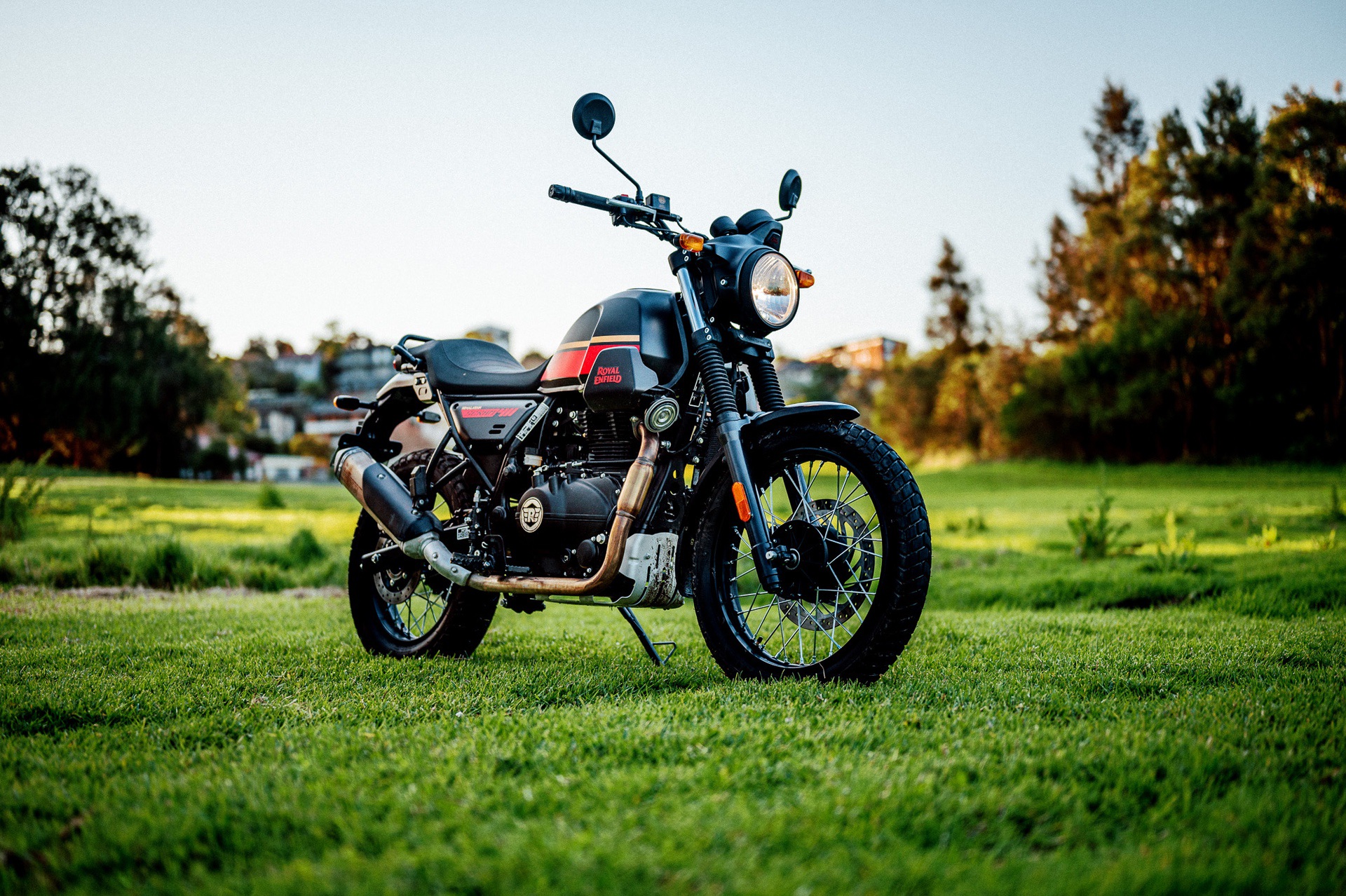


Final Thoughts on the 2022 Royal Enfield Scram 411
So let’s wipe the blackboard clean and get down to some final thoughts. Royal Enfield’s new Scram 411 is a genuinely good bike. Almost all of its competition in the “budget-conscious scrambler” segment are styling exercises from Chinese makers that have exactly zero off road creds and would probably soil their delicate little sumps at the first sight of some proper dirt riding. But not the Scram. And the fact that it can offer what it does for so little money is just a sweetener to an already very sweet deal. There’s pretty much nothing that can touch it in this segment of bikes.
Yes, it is basic. That’s how Enfield can sell it at this price. I’ve read a butt ton of criticisms online about Royal Enfield bikes and they almost always ignore this fact. No, the bike won’t be able to keep up with a Triumph Scrambler 1200, A BMW R nineT Scrambler, or a Ducati Scrambler 1100 when the chips are down. It’d be silly to think that it would. But to turn the argument on its head, take a look at how many “Best Scrambler of 2022” lists you can find in Google. Now look at how many of them include the Scram 411 right alongside these other bikes I’ve just mentioned. Talk about punching above its weight.
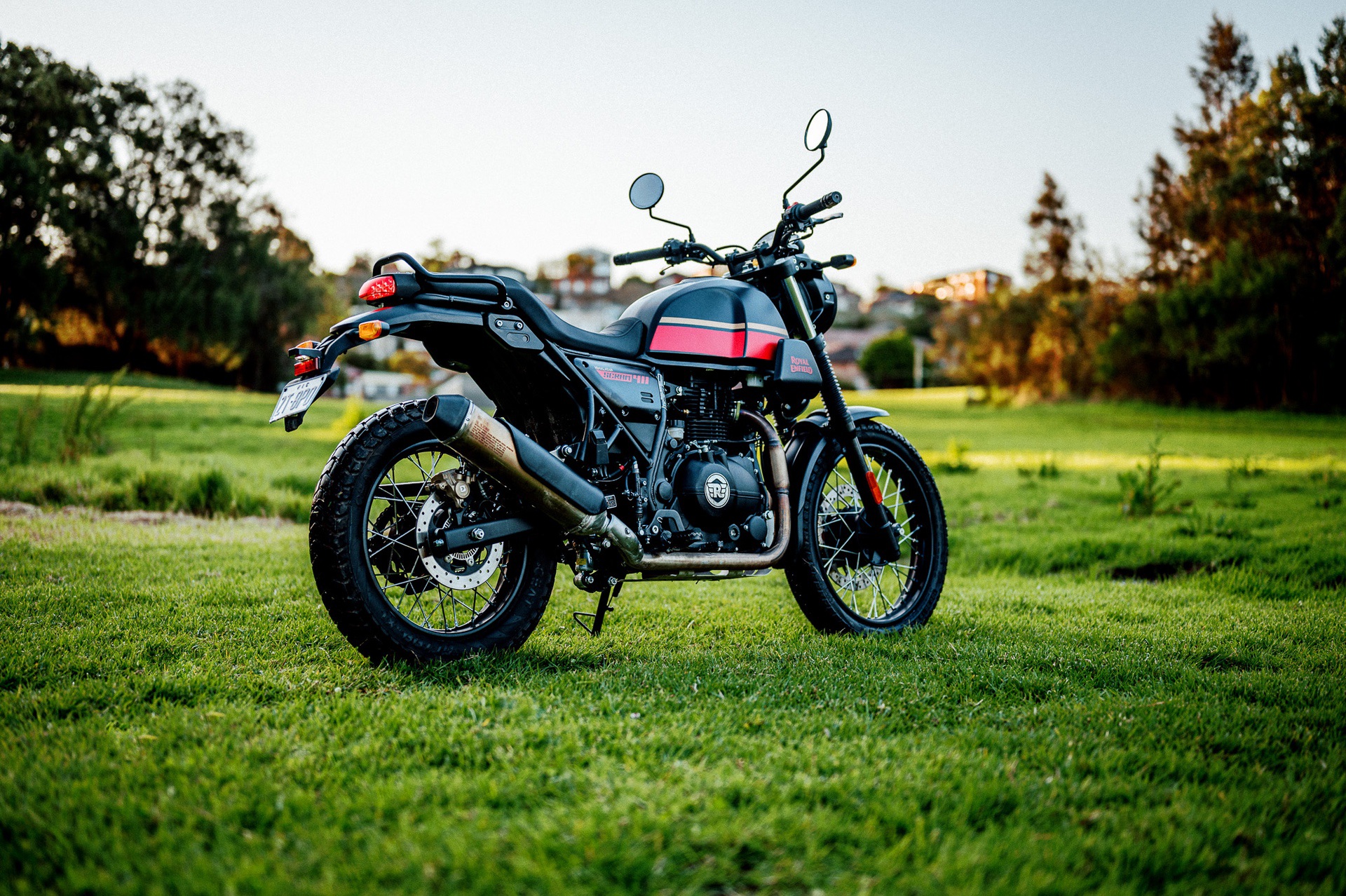


The few small qualms I’ve raised here are piddling when you stand back and look at the Scram’s bigger picture. Is a decent chunk of your riding is on road but you have an off road itch that you like to scratch every now and then? Are you younger than 40? Are you budget conscious but still happy to consider new bikes over secondhand options? Are you someone who likes to speak quietly and carry a reasonably-sized stick? Then there’s pretty much nothing that can match the Royal Enfield Scram 411.
But most of all, there’s an honesty and utilitarianism to the Scram that shines through. Where other scramblers might fall in a fashionable, pretentious heap, intimidate riders with their gargantuan size and needless amounts of power or cost so much that only owners with more dollars than sense would actually consider using them in anger offroad, the Scram 411 gently smiles, clicks into gear and rumbles honestly off down the road carrying a rider that knows what really makes them happy. If that sounds like you, then I’d suggest that you check it out.
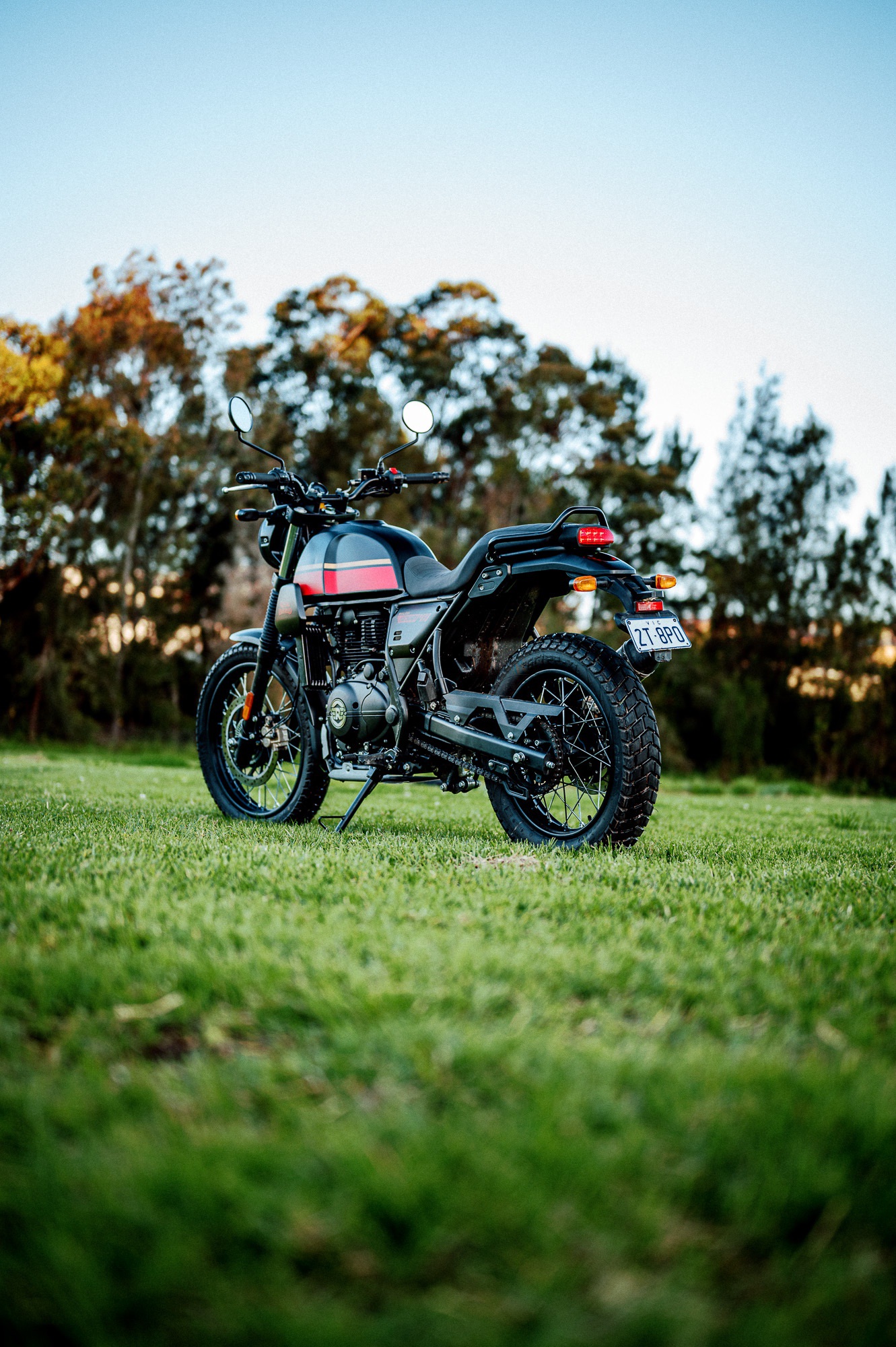


2022 Royal Enfield Scram 411 at a Glance
General Info
|
Main Specs
|
Competitors
|
Pros
- Italian-designed looks and keen value for money
- Has scrambler looks and real off road abilities
- Simple, honest and reliable
Cons
- Engine can be mechanically noisy
- Mirrors could be better
- Twin dash clocks showing two different times feels clumsy


